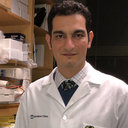Endonasal laser-assisted microscopic dacryocystorhinostomy: surgical technique and follow-up results.
Słowa kluczowe
Abstrakcyjny
OBJECTIVE
Endonasal dacryocystorhinostomy is known as an increasingly attractive and effective approach for the surgical treatment of nasal duct obstruction with minimal complications and best cosmetic consequences. In a relatively large-scale case-series study over a 5-year period, we describe the surgical technique and 12-month follow-up results of microscopic laser dacryocystorhinostomy with particular regard to the effect of various pre-/postoperational factors (ie, patients' sex, age, symptoms chronicity, previous interventions, duration of silicone intubation) on the surgical outcome.
METHODS
A total of 162 cases in 151 patients with chronic epiphora, mucocele, or recurrent episodes of dacryocystitis were included in the study. Endonasal laser dacryocystorhinostomy was performed using a surgical microscope with transcanalicular lacrimal sac illumination. The laser types used were potassium-titanyl-phosphate and neodymium:yttrium-aluminum-garnet for ablation of nasal mucosa and application to bone, respectively. Patients were evaluated 6 months and 1 year later. Data were analyzed by chi(2) tests.
RESULTS
There were no major complications during or after the operations. Complete cure occurred in 89.5% (after 6 months) and 74.2% (after 1 year) of the cases. Anatomical patency was shown by lacrimal system irrigation with fluorescein in 81.5% of the cases after the 12-month follow-up. It was found that patients younger than 55 years, with symptoms lasting less than 1 year, and without history of nasal problems, had significantly higher surgical success rates (P < .05). Moreover, rates of failure were significantly lower in cases whose canaliculi were intubated for 5 to 6 months (P < .05).
CONCLUSIONS
Endonasal microscopic laser dacryocystorhinostomy is a safe and minimally invasive procedure with reasonable results. It has many advantages over external or other conventional approaches. Successful results could be further enhanced by more wisely selecting the patients and by silicone extubation after 6 months.


